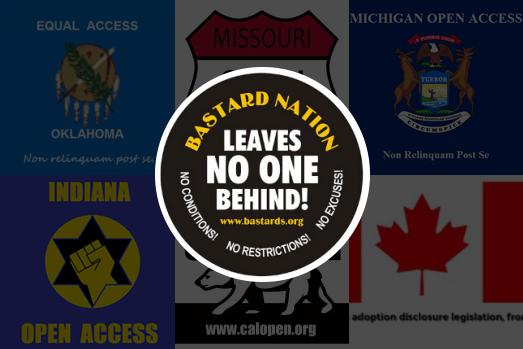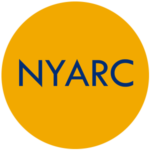VII. The Model State Act,the NCFA and the UAA
For a brief historical moment in the late 1970s, it looked as though the tide might turn in the direction of open records. In 1978 President Carter convened a panel of independent experts in the field of child welfare to address the issue of “special needs” adoption and to draft some model state legislation. The panel instead came up with a Model State Adoption Act that would open records to adult adoptees and instruct adoption agencies to serve as intermediaries in searches by birth parents for their adult relinquished children.
It is at this point that a crucial period in modern-day adoption reform began. In response to this proposed legislation the Edna Gladney Home, an adoption agency in Fort Worth, Texas, went to its supporters, consisting mainly of adoptive parents, to raise money for a lobbying organization to defeat the open records provisions of the Model State Adoption Act. The result was the National Committee for Adoption, now the National Council for Adoption. With William Pierce at its helm, the NCFA convinced senators such as John Tower and Jeremiah Denton to argue that open records threatened the institution of adoption, and when Reagan entered the White House the original Model State Adoption Act had been supplanted by an anemic version that did away with the open records provisions as well as many other reforms. The shortened act formed the basis of the Uniform Adoption Act, which made the rounds of several state legislatures in the late 1990s at the urging of the NCFA.
Under fire from both his traditional enemies and increasingly from his traditional allies, who began to take a more moderate position on adoptee rights issues, Pierce began to strike back through the NCFA’s newsletter and in other media forums throughout the late 1990s. The passage of Oregon’s open records ballot Measure 58 seemed to make him ever more desperate and led to a series of increasingly erratic public quotes. In early 1999 the NCFA announced Pierce’s retirement. He has, however, continued to wave the anti-open records banner from the presidency of the International Association of Voluntary Adoption Agencies and NGOs (IAVAAN) and has become a prominent booster of legalized anonymous baby abandonment. In recent years the NCFA has aligned itself with ultra-conservative organizations and individuals. It has taken funds from the Scaife Family Foundation and the Bradley Foundation, and its current president, Thomas Atwood, was formerly with the Heritage Foundation and the Family Research Council and served as the treasurer of Pat Robertson’s presidential exploratory team.
The Uniform Adoption Act was drafted by a study committee of the National Conference of Commissioners on Uniform State Laws and formally accepted by them in 1994, despite outrage and condemnation from national organizations as diverse as the Child Welfare League of America, National Association of Social Workers, Adoptive Families of America, Catholic Charities USA, American Adoption Congress, Concerned United Birthparents, National Adoption Center, Adoption Exchange Association, Children Awaiting Parents and the Joint Council on International Children’s Services. The Uniform Adoption Act seals adoption records for ninety-nine years, potentially criminalizes searching, does not define non-identifying information and creates a muddled mutual consent registry that virtually ensures that no exchange of information, even between willing parties, will be made. The act allows a birth mother to relinquish a child without the consent of a birth father if she states that his whereabouts are unknown or that she does not know the birth father’s identity, and establishes revocable consent periods of a dismal eight days from the birth of the child. The sections on pre-placement evaluations of prospective adoptive parents are clearly intended to make it easier for couples to adopt rather than ensure that the best interests of the child are being served.
In fact, the entire UAA is clearly meant to expedite adoptions by increasing the number of babies available through shorter consent periods and lack of adequate birth father notification controls, removing barriers to transracial adoption, terminating former contact agreements between original families and their children, and providing for easier home studies that are effective for eighteen months rather than the now-standard thirty days. Critics describe it as defining adoption as a near-contractual agreement among consenting adults regarding newborns. All reference to special needs adoption, including older children, and the placement needs of foster children, the initial concerns of the Model State Act, is gone, leading to its being perceived as facilitating the business of adoption rather than regulating a social service to provide families for children.
The Uniform Adoption Act, like all model acts, can be introduced and passed in whole or in part by state legislatures. To date the UAA has been roundly rejected by the states, which is encouraging. Authors of other sections of the UAA, such as Joan Hollinger, have been deeply critical of Pierce’s role in the sealed records and anti-search provisions, as his insistence on including them has greatly lessened the credibility of the Act as a whole and generated enough opposition to preclude the passage of the UAA in any form.




